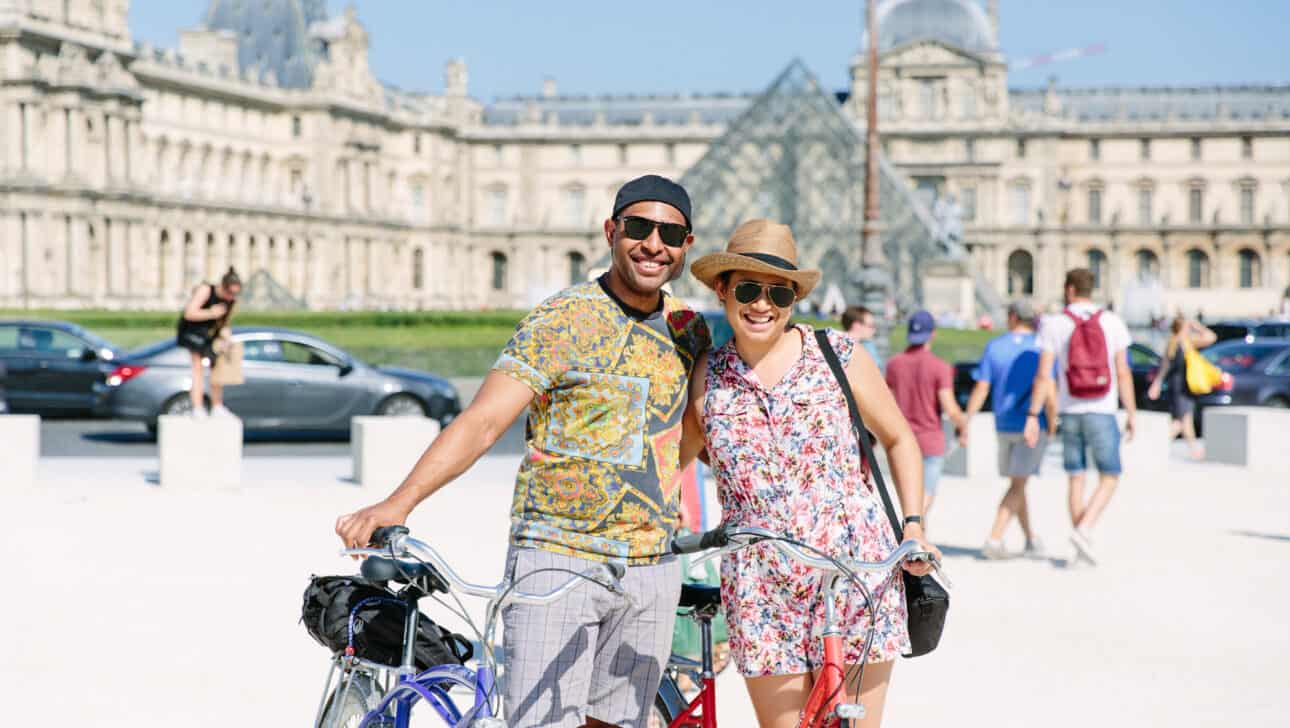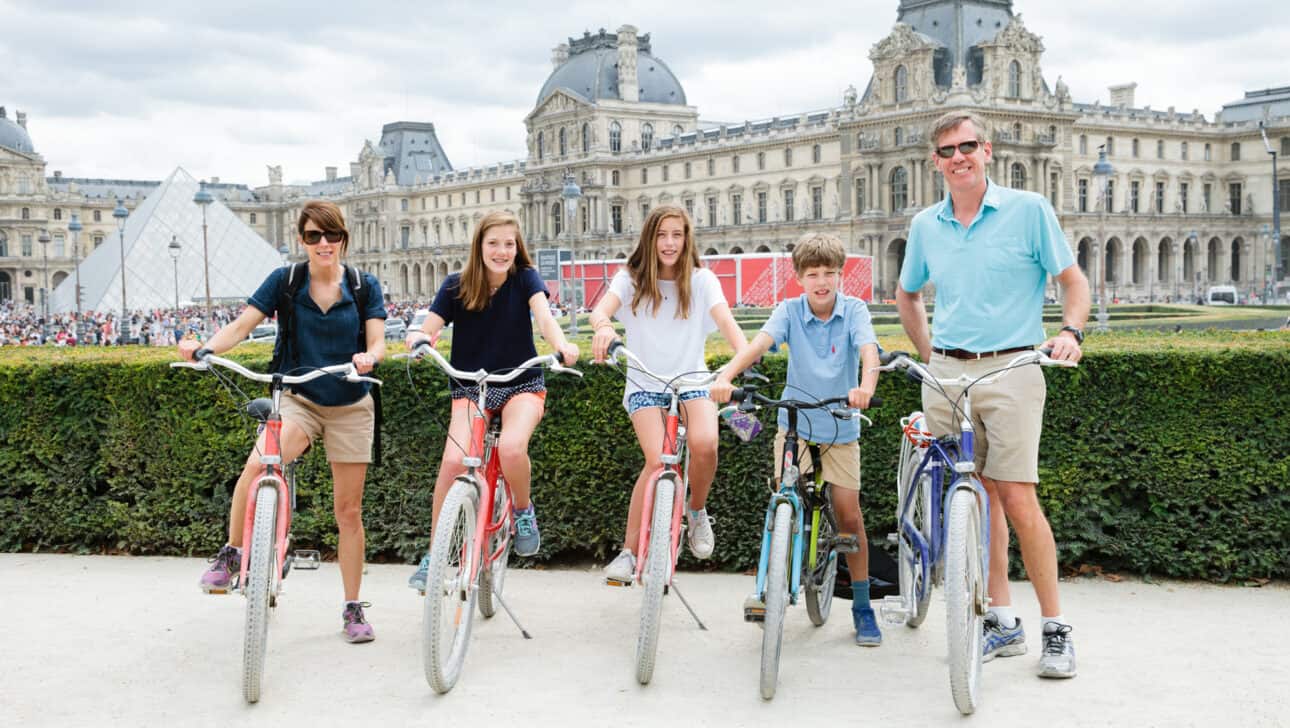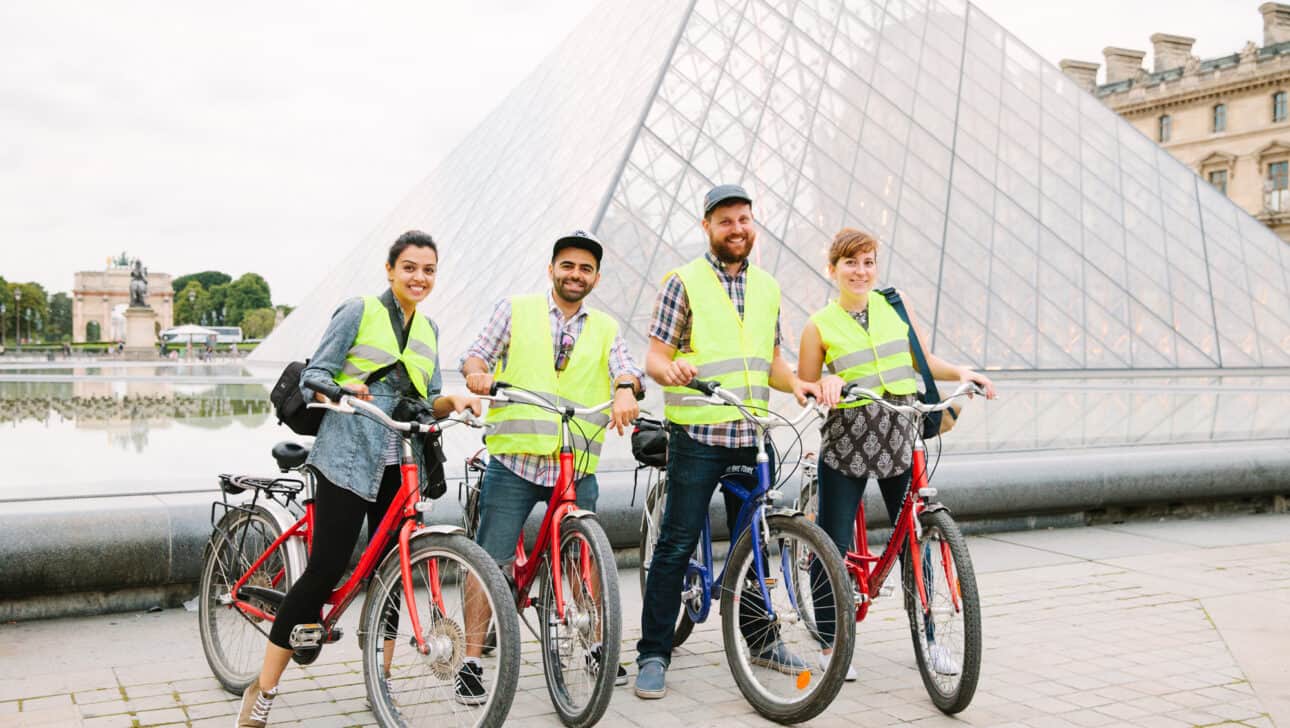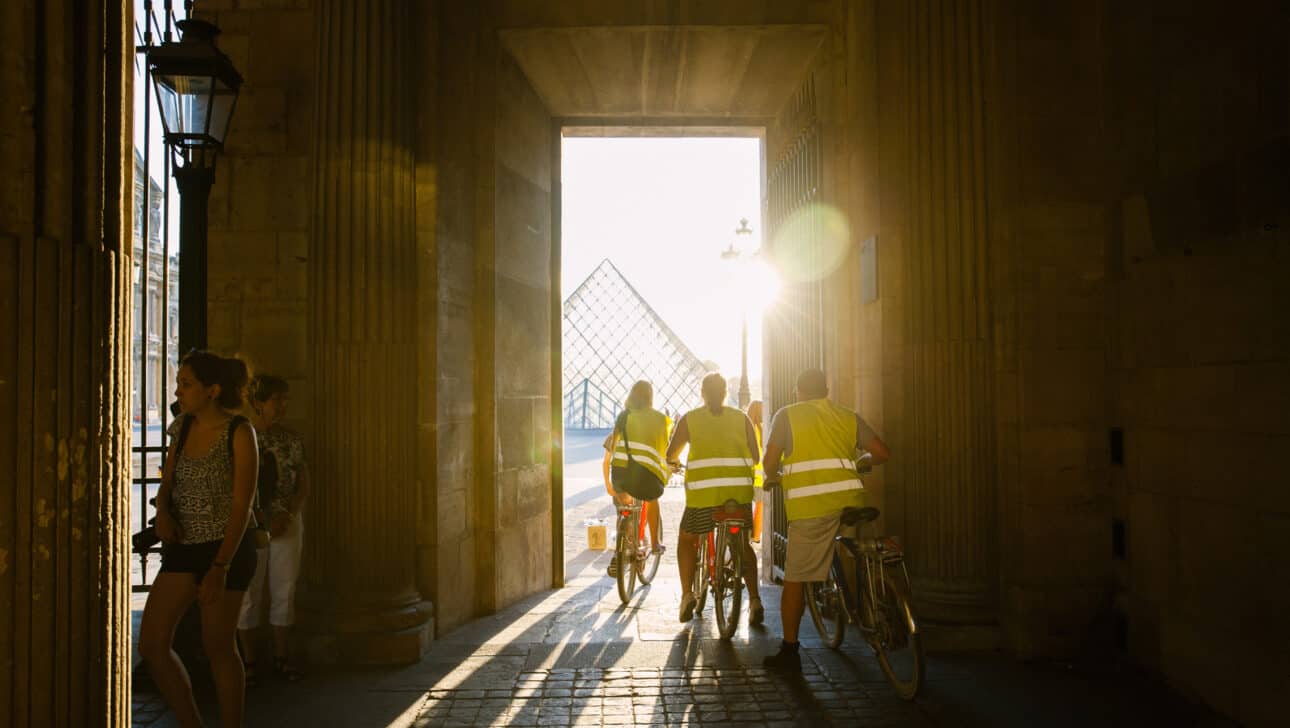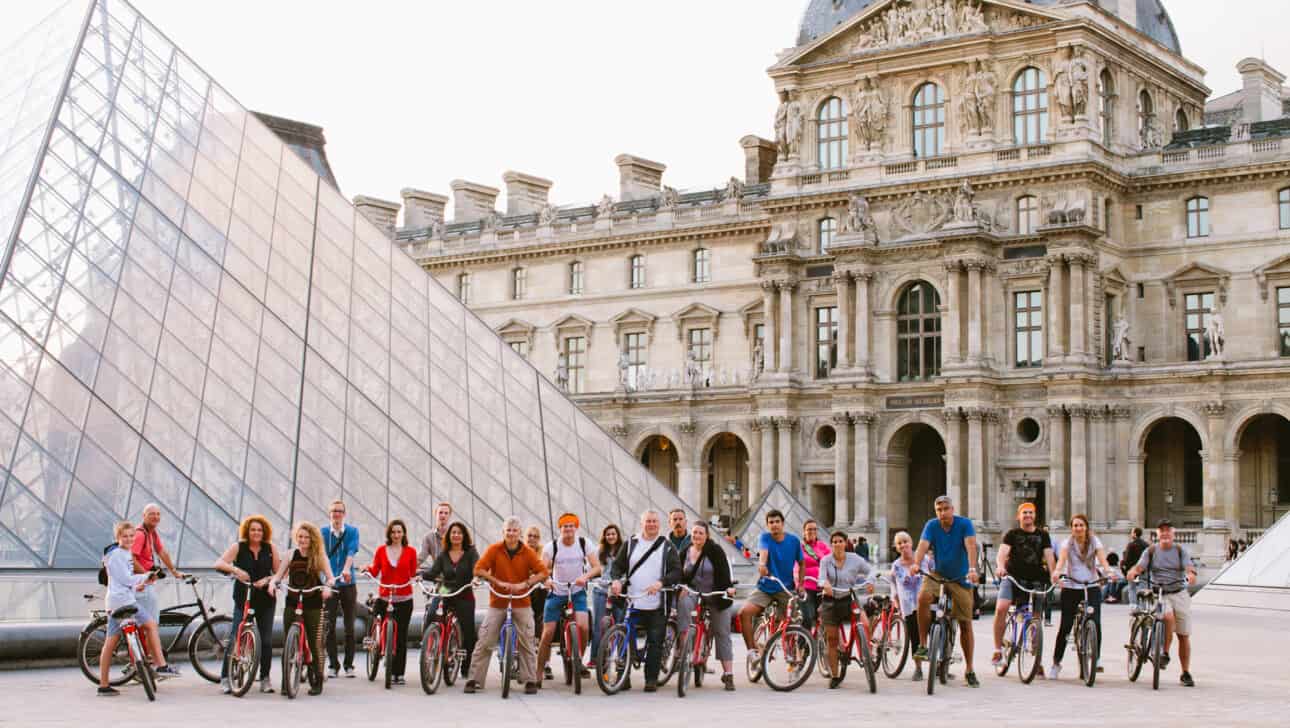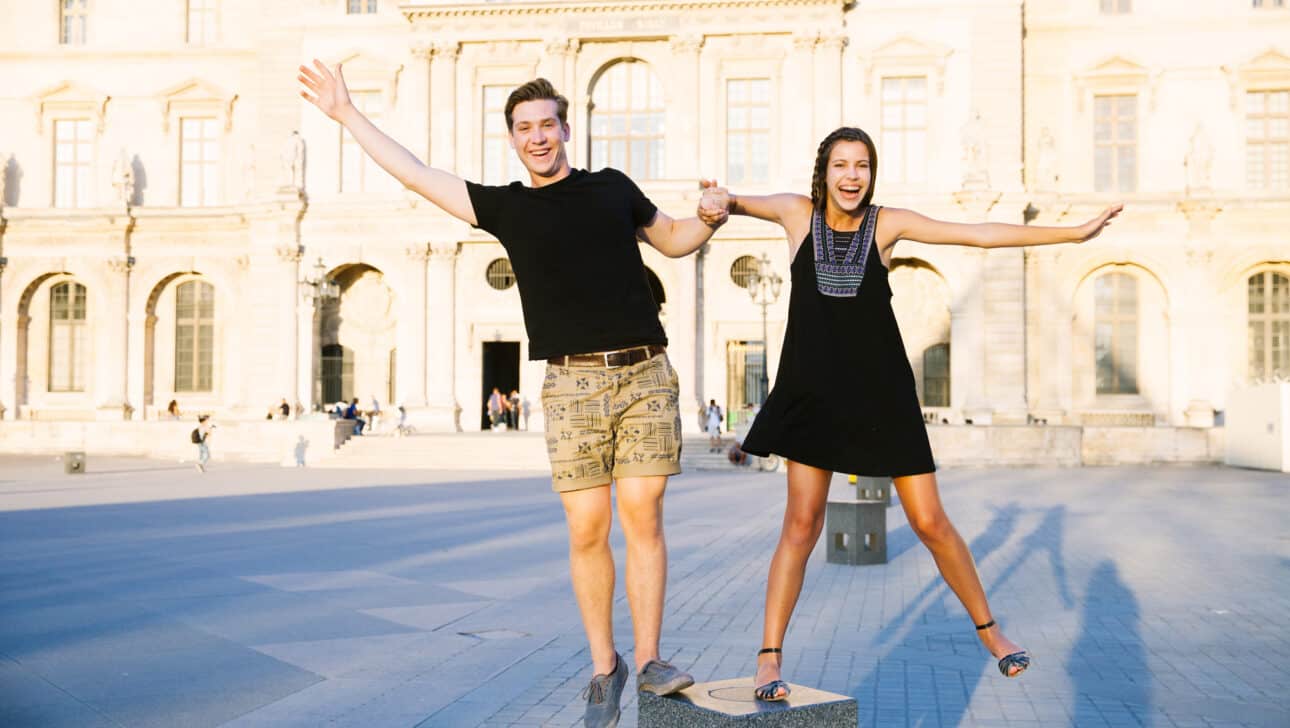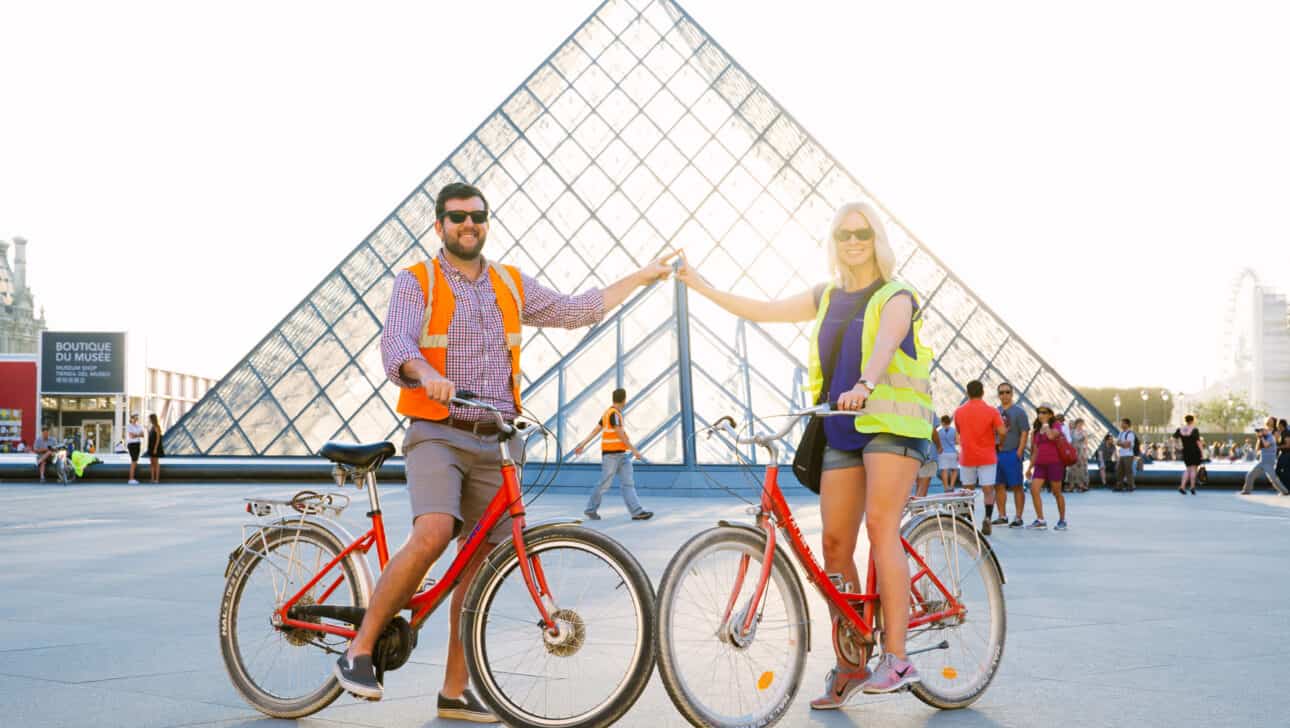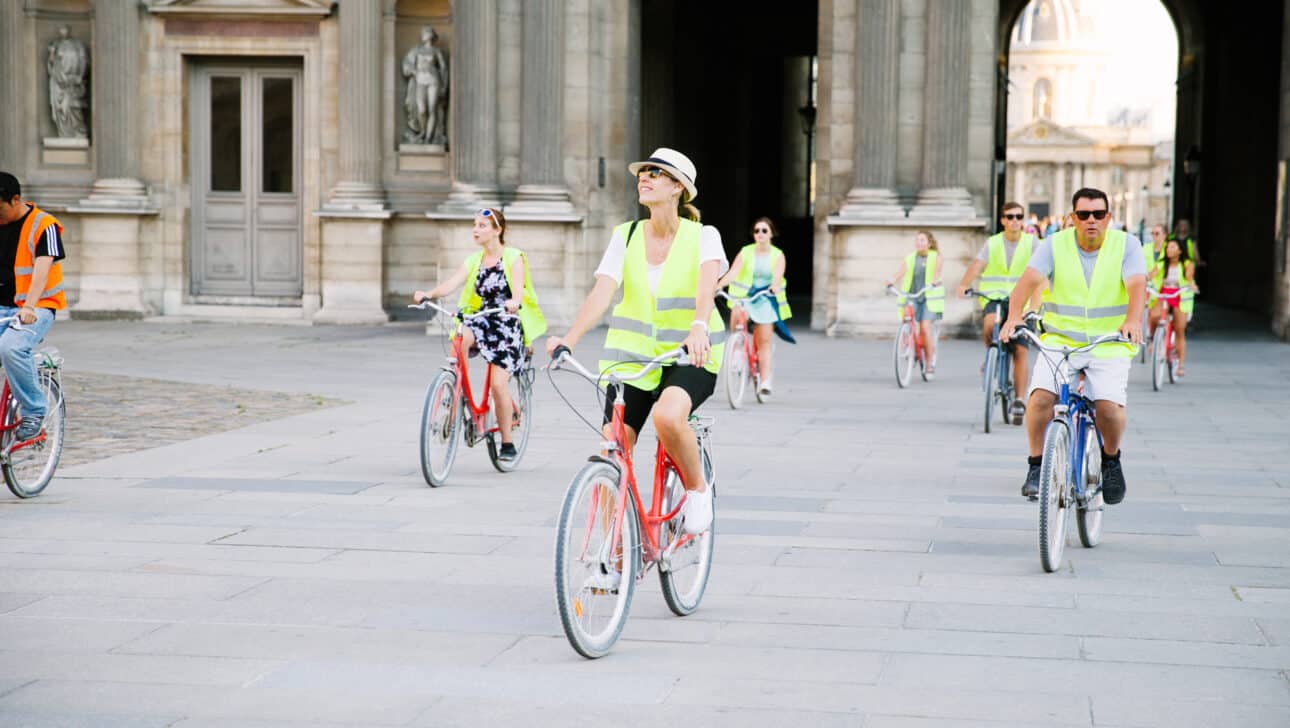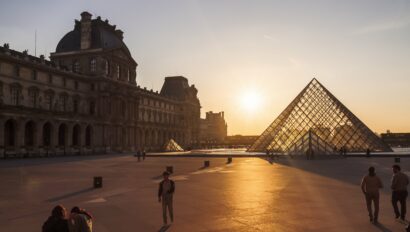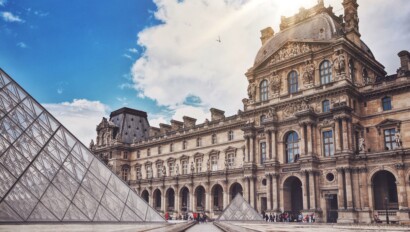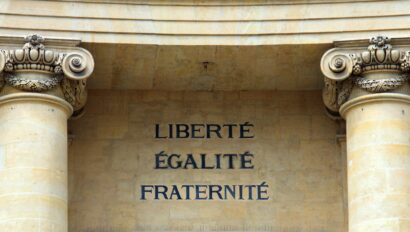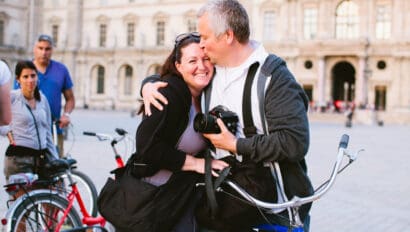
Louvre
Louvre Museum
(Musée du Louvre)
Beautifully situated on the banks of the Seine, the Louvre was originally built as a fortress in the late 12th century and served as a royal residence centuries later. The Louvre buildings were left abandoned for several years, but in 1793, it opened to the public as a world-class museum of fine arts.
Today, the Louvre is the largest museum in the world and is home to some of the most famous works of art in history. Interestingly, Napoléon Bonaparte actually (and temporarily) renamed the Louvre after himself. He called it the Musée Napoléon. Many years later in 1911, it became a prime site for stolen artwork, with the Mona Lisa, of course, the first to go.
This enormous museum spans about 15 acres and is divided into sections that feature art from Egypt, Greece, Rome, the Middle East, and beyond. Visitors can marvel at paintings, including Leonardo da Vinci’s “Mona Lisa,” sculptures, drawings, prints, and decorative arts. There are over 35,000 artistic works on display at the Louvre that date back to the 6th century B.C. and as recent as the 19th century A.D.
Visitors can access the museum from the Pyramid and Galerie du Carrousel and Passage Richelieu. Informational maps are available in multiple languages and formats to offer visitors seeking a more in-depth experience.
Visitors can join our Skip the Line – Louvre Tour to bypass the long queues alongside your expert guide. For a VIP experience, we offer the Louvre Tour – Closing Time with the Mona Lisa. You can join our Night Bike Tour where you can cruise through the Louvre’s courtyard and experience the most picturesque view of a Paris sunset.
Louvre
Practical Information
Daily except Tuesday: 9:00am until 6:00pm
Wednesday and Friday: 9:00am until 10:00pm
€17/adults online
€15/adults at the museum
Palais-Royal Musee du Louvre (Line 1 & 7)
Bus:Lines 27, 39, 68, 95 stop: Musée du Louvre
Lines 21, 69, 72 stop: Palais-Royal, Musée du Louvre
